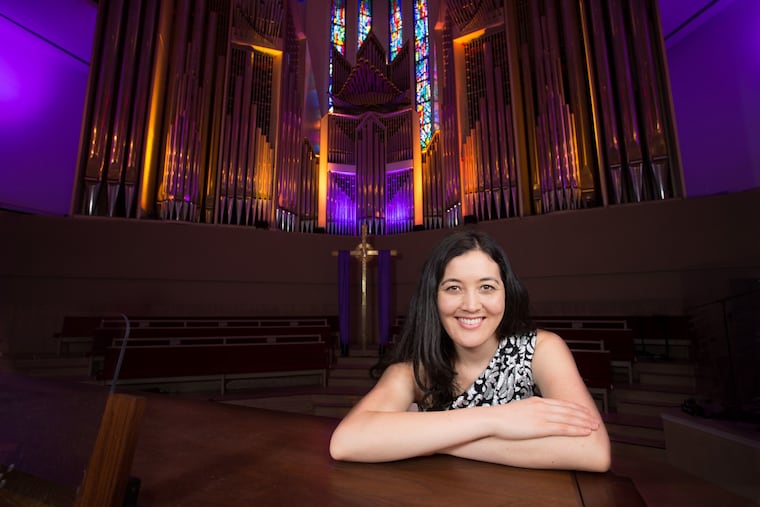Philadelphians have a rare chance to geek out on some seriously strange sounds
Everyone in Philly walks past gorgeous buildings not knowing the organs they quietly house. It’s your chance to change that.

Frederick R. Haas knows his organs. He earned a degree from the prestigious Oberlin Conservatory of Music in organ performance, and over the last few decades he’s played on Philadelphia’s great instruments — including the mighty Fred J. Cooper Memorial Organ at the Kimmel Center, named for his grandfather.
And yet when the Philadelphia Organ Festival opens this week, the spotlight will land on some organs that even Haas has never heard. Philadelphia has so many organs, who could be acquainted with them all?
“We all know there are all these organs out there that are like little lost souls,” Haas said.
The city’s first Philadelphia Organ Festival aims to bring at least some of them into the fold. The festival presents nine concerts featuring organs both famed and unsung from March 15-23, mostly outside of Center City in neighborhoods north, south and west, and beyond.
“Everyone in Philly is always walking by these incredible buildings, including gorgeous houses of worship, but going inside is something we don’t usually get an opportunity to do,” said John Walthausen, the festival’s artistic director. “This is a chance to experience Philly in a different way.”
And to experience some musical gems. Among the instruments that will roar to life are a 1927 Möller organ at Tindley Temple on South Broad Street in a program by organist Alan Morrison honoring Philadelphia contralto and civil rights figure Marian Anderson, who performed there.
“What makes it really special is the organ was commissioned and purchased by an African American church community, and it brings together palettes [sounds] from theater organs of the silent film era. The general palette is very lush,” Walthausen said.
A recital by organist Chelsea Chen and a brass ensemble gives listeners a chance to hear the 1931 Skinner at Girard College Chapel.
“It’s one of the largest E.M. Skinner organs from the end of his glory years,” said Haas, a major donor to organ projects nationally, who is sometimes referred to as Philadelphia’s godfather of the organ. “So many of his organs have been altered beyond recognition. It’s a treasure.”
If a somewhat hidden one. “The entire installation is in the ceiling and speaks through this art deco grille. Not a lot of people know it’s there,” Haas said.
“With pipe organs, the room is half the instrument. Pipe organs are radically different depending on the room they’re in.” In Girard College Chapel, “you almost can’t tell where the sound is coming from. It just envelopes you. It’s so powerful but has all these soft, shimmering sounds up to a majestic tutti that thrills everyone.”
A 1964 Rieger imported from Germany is the star at the Unitarian Society of Germantown in Bach’s cantata Wir müssen durch viel Trübsal, BWV 146, presented in a format akin to how Bach would have presented it in 1720s Leipzig. Rather than performing on stage, the musicians will be in the organ loft.
“Everyone is singing from above, which is not something we get to hear every day,” said Walthausen, who will be playing the Rieger at the concert.
The instrument is a mechanical action organ, “so the player has a much closer rapport with the sound production,” Walthausen said. “It’s brighter, it’s clearer. It’s designed to have this articulating, speechy quality.”
The Philadelphia Organ Festival is a project of Partners for Sacred Places, a Philadelphia nonprofit founded in 1989 to help congregations that own historic buildings “reimagine and make the most of their space on behalf of the larger community, preserving their buildings and hosting programs that serve people in need,” said A. Robert Jaeger, the group’s president.
The festival was seen as a way to build audience interest in churches and organs, “to get congregations to understand pipe organs, who made them, and how to be better stewards of these organs,” he said.
Many congregations have struggled with declining attendance and competing financial obligations, and organs sometimes slip to the bottom of the list of priorities.
Since the 1996 Organ Historical Society convention in Philadelphia, local organs have not fared well. Of the instruments and sites featured then, nearly half are now unplayable, in poor condition, or destroyed; or located in sacred places that have closed, been demolished or converted to new uses, according to a group of local organ experts.
There are currently 830 purpose-built sacred places in Philadelphia, “and most of them would have had a pipe organ,” he said. Partners for Sacred Places is currently in the process of surveying how many organs have survived and determining their condition.
The hope is that the organ festival will continue on an ongoing basis, and that it can raise the profile of sacred buildings and the grand musical instruments they house.
“If we can help build an audience for these places and these pipe organs by inviting people in to experience the music, that is key to getting people to care,” said Jaeger. “They may not worship, but may volunteer their time or make a gift. These are ways to get people involved, to understand that there’s something really special in their own backyard.”
The Philadelphia Organ Festival runs March 15-23 at various locations. Tickets are $30, $25 for seniors and $10 for students. phillyorganfestival.org. The organ fun concludes Saturday, March 23 at the Kimmel Center, Broad and Spruce Streets, with the 12th annual Organ Day — a free open house with organ demonstrations and performances from 11:30 a.m. to 6 p.m. ensembleartsphilly.org.